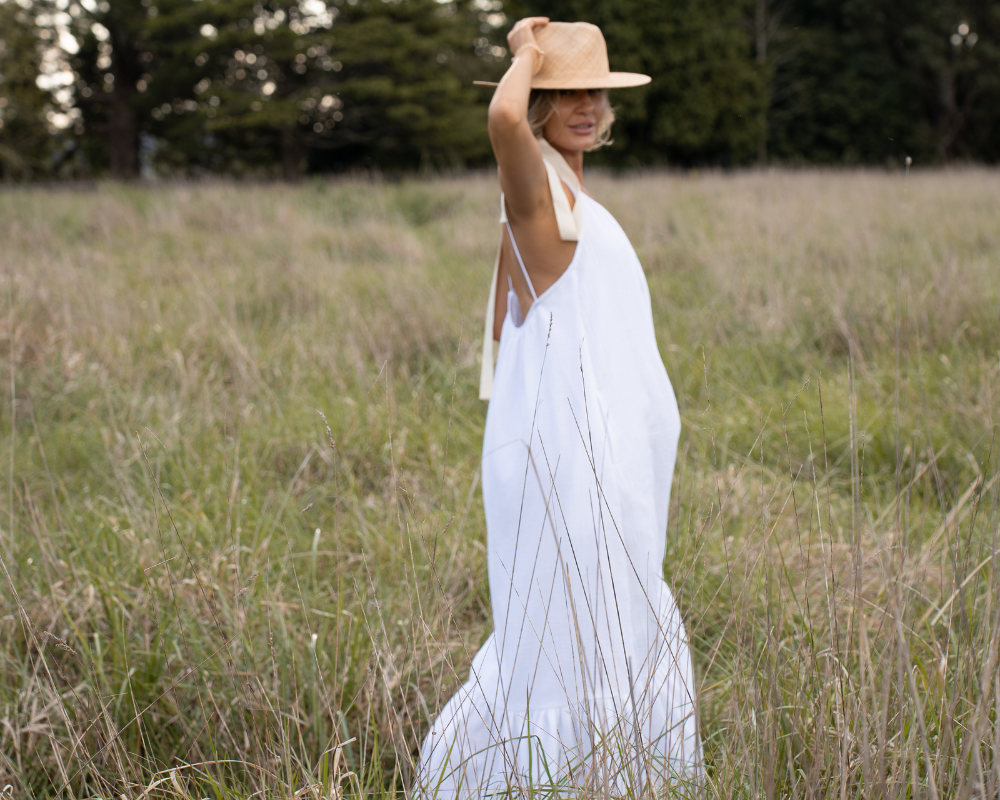As we begin a new year there has never been a better time to make some sustainable changes to your wardrobe. If you think the task is too big or daunting then my advice is to focus on just one thing and commit to it. Whether it's mending and repairing your clothes or opting for natural fibres, every decision you make contributes to positive change.
Prioritise Natural Fabrics in Your WardrobeNatural fibres decompose sooner than synthetics and are often produced using less water, energy and chemicals making them a more environmentally friendly choice. Synthetic fibres are made from chemicals known as polymers that are derived from petrochemicals which is basically crude oil, making the fashion industry a major consumer of fossil fuel. most of the clothes we wear are also made from oil and gas. Synthetic fibre production uses the equivalent amount of oil per year as the entirety of Spain, and polyester production alone produces the equivalent emissions of 180 coal-fired power stations annually. Say no to synthetics and choose natural fibres such as cotton, silk, linen or wool that benefit both you with breathability, trans-seasonal wearing and sustainability.

Make a Commitment to the 30 Wears Challenge
The average person only wears 40% of their clothes and throws away clothing after an average of seven to ten wears. Of the clothes that do go to charity, only 15% are resolved within Australia, the rest end up in landfill. Originally started by Olivia Firth of Eco-Age the 30 Wears Challenge is about wearing every piece of clothing you buy at least thirty times. Before you buy another item ask yourself - will I wear this 30 times? This number was set as a benchmark, set a higher challenge for yourself and make a real impact to sustainable fashion.
Practice Mindful Washing and Care
Every time we do our laundry and average of 9 million microfibres are released into waste water treatment plants that cannot filter them. How you look after your clothes severely impacts their lifespan. Extend the life of your clothing by practicing mindful washing and care. Wash your clothes at lower temperatures, use eco-friendly detergents, and air dry whenever possible. Avoid using the dryer, as it can cause shrinkage and damage to fabrics. By taking proper care of your clothes, you can reduce the need for frequent replacements.
Invest in Core Essentials
Instead of following all the fashion trends, invest in a few core essentials you can style different ways. Key wardrobe items like a white cotton shirt, a little black dress, or a wool blazer can be worn year after year. Get creative and add these items to current trends. Consider your body type and what you actually feel good in and you'll end up saving money in the long run.
Choose Quality Over Quantity
Check the inside of the garment before you buy it. Take a closer look and ask questions like - are the seams stitched neatly or topstitched with extra reinforcement? Are the buttons and zips securely fastened? Should this garment be lined? By choosing quality made garments you can minimise the need for frequent wardrobe updates and support a sustainable fashion industry.
Mend Repair and Upcyle
Instead of discarding clothing with minor damages re-invent your clothing with patches or neat, visible, mending. If you don’t, sew, or are time poor you can always find a good dressmaker or tailor who can breathe new life into your clothes, and celebrate the imperfections. By giving your clothes a second life, you'll reduce waste and contribute to a more sustainable wardrobe.
Remember, small changes can make a big difference when it comes to reducing the environmental impact of the fashion industry. Start today and be a part of the movement towards a more sustainable future.
References
https://www.commonobjective.co/article/synthetics-sustainable-synthetics-global-production
https://eco-age.com/resources/
https://thefashionadvocate.com/


